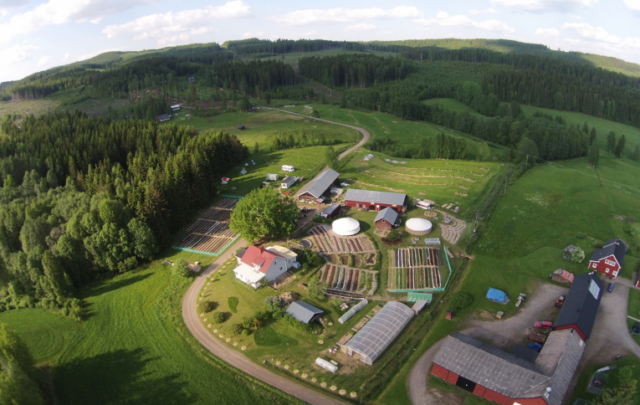Click on the headline (link) for the full text.
Many more articles are available through the Energy Bulletin homepage
World’s Water Resources Face Mounting Pressure
Elizabeth Mygatt, Earth Policy Institute
Global freshwater use tripled during the second half of the twentieth century as population more than doubled and as technological advances let farmers and other water users pump groundwater from greater depths and harness river water with more and larger dams. As global demand soars, pressures on the world’s water resources are straining aquatic systems worldwide. Rivers are running dry, lakes are disappearing, and water tables are dropping. Nearly 70 percent of global water withdrawals from rivers, lakes, and aquifers are used for irrigation, while industry and households account for 20 and 10 percent, respectively.
Pressure on water resources is particularly acute in arid regions that support agricultural production or large populations—regions where water use is high relative to water availability. The Middle East, Central Asia, North Africa, South Asia, China, Australia, the western United States, and Mexico are especially prone to water shortages.
Much of the growth in water use over the past half-century is from a vast increase in irrigation, which is used to produce 60 percent of the world’s grain. Globally, irrigated area nearly tripled between 1950 and 2003, growing from 94 million to 277 million hectares. This growth, however, is tapering off as the water needed to expand irrigation becomes increasingly scarce. Forty years ago, irrigated area was expanding at an annual rate of 2.1 percent, but the last 5 years of data reflect slower growth of only 0.4 percent. Since governments are more likely to report gains from new projects than losses as wells go dry, as rivers dry up, or as irrigation water is diverted to cities, these estimates may be high and irrigated area may have already peaked. (See Figure and Table.)
Meanwhile, the extent of irrigated area per person reached a high of 47 hectares per thousand people in 1978 and has been shrinking steadily since 1992. In 2003, per capita irrigated area dropped below 44 hectares per thousand people, the lowest level of the past four decades. With population growth outpacing growth in irrigated area, this figure is unlikely to rebound substantially.
World Irrigated Area Per Thousand People 1950-2003
As demand for water continues to grow in order to satisfy rising agricultural, industrial and residential needs, aquatic ecosystems struggle to respond. Countless communities depend heavily on rivers, both for direct water use and as a source of energy. But as upstream populations increase their demands, downstream communities have less water available to them. In some cases, rivers become so overexploited that they cease to exist altogether…
Aquifers are being overexploited in major food-producing regions, including the North China Plain, a region that yields half of China’s wheat and one third of its corn; Punjab, Haryana, and other highly productive agricultural states in northern India; and the southern Great Plains of the United States, a major grain-producing region. Together, China, India, and the United States produce nearly half the world’s grain, and these three countries plus Pakistan collectively account for over three fourths of the world’s reported groundwater extraction for agricultural purposes. Falling water tables in these countries may make expanding world food production more difficult. (See Table of Underground Water Depletion in Key Countries.)
While groundwater is integral to today’s agriculture, it is also a valuable resource in urban environments. Some of the world’s largest cities, including Mexico City, Calcutta, and Shanghai, rely heavily on local groundwater. Thirty percent of China’s urban water supply is fed from groundwater. Worldwide, it is estimated that roughly 2 billion people—in both rural and urban environments—rely on groundwater for daily water consumption.
(27 July 2006)
As usual this Earth Policy Insitute comes with useful graphs and data. See original. As we go over peak oil there will be less energy for pumping, less energy to desalinate sea water, so these problems will compound.
-AF
Thirsty Planet
EcoWorld
How much water have we really got? It would seem like quite a lot, since the earth’s surface is 71% water. But appearances can be deceiving.
All the water on earth would fit into a cube not quite 700 miles on a side. If that seems like a lot, remember this includes oceans and icecaps. All the fresh water in the world, including icecaps and groundwater, would fit into a cube just over 200 miles on a side. And if you limit your water to lakes and rivers, all of them in the world would fill a cube a mere 36 miles on a side. Since the icecaps are frozen, and groundwater is replenished very slowly, this 36 mile cube, representing all the water in all the lakes and rivers of the world, is all we’ve got
Moreover, only about half the amount stored in Earth’s lakes and rivers is replenished each year by snow and rainfall. This renewable amount is how much humans, plants, animals and ecosystems get per year to live.
It’s not enough. Industrialized, developed nations consume far more water than developing nations, and the world is developing at a pace unprecedented in human history. Throughout Asia and Latin America, standards of living are increasing and with them, per capita usage of water. Currently an American or Western European uses four times as much water as someone in the developing world. What happens when 1.3 billion Chinese, .5 billion other East Asians, 1.1 billion Indians, and nearly 1.0 billion Latin Americans begin to enjoy a lifestyle that approaches western standards? More meat, which requires grain-fed livestock, more showers, more flush toilets, more factories, more irrigated land. There is not enough fresh water on this planet to allow the per-capita consumption of water in the western world to be matched by the rest of the world.
(7 Aug 2006)
Retreating glaciers take Earth’s water stores
Doug Struck, The Washington Post via IndyStar.com
QUELCCAYA GLACIER, Peru — In the thin, cold air here atop the Andes mountains, the blue ice that has claimed these peaks for thousands of years and loyally fed the streams below is now disappearing rapidly.
Mountain glaciers such as this are in retreat around the Earth, taking with them vast stores of water that grow crops, generate electricity and sustain cities and rural areas.
Farmers here say that over the past two decades they have noticed a dramatic decrease in the amount of ice and snow on their mountaintops. The steady supply of water they need to grow crops has become erratic.
“There is less water now. If there is no water, this land becomes a desert,” said Benedicto Loayza, a 52-year-old farmer, standing under pear trees fed by channels dug on the mountain.
Cuzco, a city of 400,000, has already resorted to periodic water rationing and started pumping from a river 15 miles away for its drinking supply.
In Peru’s capital, Lima, engineers have urged successive governments to drill a tunnel through the Andes and build big lagoons to ensure that the city’s 8 million residents have water. Citing the expense, authorities have dawdled. Cities in China, India, Nepal and Bolivia also face water shortages as the glaciers shrink.
“You can think of these glaciers as a bank account built over thousands of years,” Lonnie Thompson, one of the first scientists to sound the alarm, said as he stood by the largest ice cap in the Andes. “If you subtract more than you gain, eventually you go bankrupt. That’s what’s in process here.”
(6 Aug 2006)
More than two million people face shortage of drinking water in China
AFP, Yahoo!
Southwest China is experiencing a serious drought, with 2.39 million people facing a shortage of drinking water, state media have said.
The dry spell has descended over Sichuan province, which is located only a few hundred kilometers (miles) from Guizhou region which is currently soaked in torrential rains.
Xinhua news agency said 53 counties were hit by drought in spring, followed by 113 counties during the summer months, affecting not just large numbers of people but also more than three million head of livestock.
By the end of last month, over 60 percent of small-scale irrigation systems in the drought-stricken areas had dried up, resulting in total crop failure on 120,000 hectares (300,000 acres) of farmland, Xinhua said.
(6 Aug 2006)
Chinese Impose Rules for Water Use
Maureen Fan, Washington Post
New Measure Seeks To Reduce Disputes Along Yellow River
—-
BEIJING — For centuries, the Chinese have struggled through flood and drought to tame the Yellow River, known as the Mother River, birthplace of Chinese culture, writing and folktales. Now the government is tightening controls over the river’s precious contents.
Authorities said a new law, which went into effect Tuesday, will allow for better management of resources and reduce the number of regional fights over water from the Yellow River. It will give the Water Resources Ministry the power to set plans for water usage for 11 provinces or municipalities along the 3,395-mile river, and it will impose sanctions or fines on officials who do not comply with regulations or who take more water than is allowed.
The new law also differs from previous water conservation rules in that it includes emergency measures in case of severe drought or “major water pollution events.”
“This regulation provides more explicit and strict organizational guarantees compared with previous regulations,” Li Guoying, commissioner of the Yellow River Conservancy Commission, said at a news conference in Beijing.
The move to tighten control over the river is a reflection of China’s tremendous economic growth and industrial development, which have fueled the demand for natural resources. More than 400 of China’s 600 cities suffer water shortages. The problem is especially acute in 108 cities, many of them along the Yellow River.
The river supplies water to 140 million people, or 12 percent of China’s population, and irrigates about 15 percent of the country’s farmland. For years, overuse, pollution, drought and farming took their toll. The river dried up during 21 out of the 27 years between 1972 and 1999, officials said
(1 Aug 2006)
Saving The World, Drip By Drip
Jeremy Faludi, WorldChanging
Ten years ago, World Bank VP Ismail Serageldin said “If the wars of this century were fought over oil, the wars of the next century will be fought over water.” Though some people at the UN disagree, there is no question that water scarcity is a looming problem of our time.
What many urban greens don’t know is that solving the world’s water problem requires solving the irrigation problem. Both in the developed and undeveloped world, irrigation is a boon to agriculture, and in some ways a boon to sustainability, allowing farmers to increase production of their land without having to convert more forests or other wild areas into cropland.
However, inefficient irrigation wastes more water than all the people of the world use (efficiently or inefficiently) for all their drinking, bathing, manufacturing, and industry. By a long shot. Worldwide, 70% of all water use is agricultural irrigation, according to the UN World Water Development Report. (22-23% is used for industry, and the remaining 7-8% is domestic use.) In the US, irrigation uses 80%, and in the dry western states 90%, according to the USDA.
What’s more, the UN’s World Water Assessment Program says that almost 60% of irrigation water is wasted. (These and many other impressive statistics at International Water Management Institute and Earth Policy Institute.) Usage and efficiency differs from country to country, but to give you an idea of scale, the unit of measure for irrigation in the US is an acre-foot: the amount of water required to fill an acre of land one foot deep. (That’s about 1.2 million liters.)
Why does all this irrigation water get squandered, and how can it be fixed?
For poor farmers, irrigation water is usually squandered by lack of infrastructure–bringing water from river or dam to field using canals without linings or covers, which would prevent water soaking into unfarmed soil or evaporating into the air. Since most of the world’s poorest people are farmers, they are also the people who suffer the most from inefficient water use, because they are the last ones to get clean safe drinking water….
For rich farmers, water is usually squandered by the tragedy of the commons.
(6 Aug 2006)
Related:
- South Africa: Hendricks warns of water shortages
- Former Soviet leader Gorbachev says water, energy shortages could cause wars
- Mediterranean farming risks water shortages
- Water shortages as Sweden swelters
- Water shortages in Croatia hurting tourism
- Sierra Leone capital hit by worst water shortages in decades
- Lebanon: UN Says Water, Fuel Shortages Threaten the Country with Epidemics
- Washington Insight: EPI Warns of Increasing Stress on World Water Supplies
- Qld Cabinet considers water ‘state of emergency’





